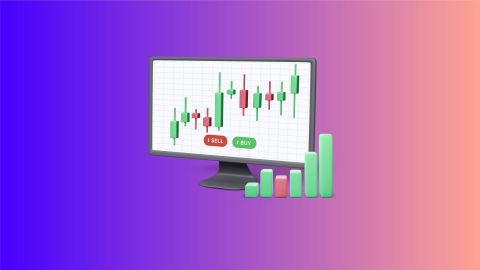Currency Futures
Futures contracts, a type of derivative, are widely used for hedging and speculation purposes. They are available for various assets such as stocks, indices, commodities, and currency pairs. In this discussion, we will cover currency futures and will understand how they are used as a shield against currency risks and how traders use them to earn speculative profits.
What are currency futures
Currency futures are financial contracts that are traded on exchanges. These obligate the buyer to purchase or the seller to sell a specific amount of a currency at a predetermined price on a future date.
Let’s understand with an example.
The event
- Let us assume that you run a textile business in India and need to import cotton from the United States.
- You need to pay your US supplier $10,000 in three months.
- However, you are worried that the Indian rupee might weaken against the US dollar, making it more expensive for you to pay.
The hedge
- To protect yourself, you decide to buy a currency futures contract.
- The current exchange rate is Rs. 75 per US dollar (assumed).
- You enter into a currency futures contract to buy Rs. 10,000 at Rs. 75 per dollar after three months.
The outcome
- After three months, the exchange rate turned out to be Rs. 80 per dollar.
- However, you are still able to buy dollars at the agreed-upon rate of Rs. 75 per dollar.
- This way, you have used currency futures to protect yourself against the risk of a weakening rupee.
What are the features of currency futures
Let us have a look at some key features:
Standardised contract sizes
- Currency futures contracts have standardised contract sizes.
- These specify the amount of the base currency being traded.
- For example,
- The contract size of a standard currency futures contract for USD/INR is based on 1,000 USD
- The contract size of a standard currency futures contract for USD/INR is based on 1,000 USD
Fixed expiration dates
- Each currency futures contract has a fixed expiration date, typically occurring on a specific day of the month.
- After the expiration date, the contract is settled either through:
- Physical delivery or
- Cash settlement
Centralised trading platforms
- In India, currency futures are traded on centralised exchanges like the:
- National Stock Exchange (NSE) or
- Multi Commodity Exchange (MCX).
- These exchanges provide a regulated marketplace where buyers and sellers can trade currency futures contracts transparently and efficiently.
Transparent pricing
- Currency futures prices are publicly available and transparent.
- All the market participants can:
- See real-time quotes and
- Trade at market-determined prices
Liquidity
- Currency futures markets are highly liquid.
- There is a high volume of trading activity and tight bid-ask spreads.
- This liquidity allows traders to enter and exit positions easily without significantly impacting market prices.
What are the margin requirements in the currency futures
To trade in futures contracts, traders are required to:
- Deposit an initial margin, and
- Maintain a maintenance margin with their broker
It must be noted that, if a trader's account balance falls below the maintenance margin level, they are required to deposit more funds to bring it back up to the required level.
Let us understand better through an example.
- A trader wants to enter into a currency futures contract for USD/INR on the National Stock Exchange (NSE).
- NSE requires an initial margin of 4% (assumed) of the contract value.
- The trader’s contract size is $1,000 and the current exchange rate is Rs. 75 per dollar.
- In such a case, the contract value would be Rs. 75,000.
- Therefore, the initial margin required would be 4% of Rs. 75,000, which is Rs. 3,000.
Additionally, the trader must maintain a maintenance margin, which is usually lower than the initial margin. Let's say the maintenance margin is 2% of the contract value, which would be Rs. 1,500 in this case.
- If the trader's account balance falls below Rs. 1,500, they will be required to deposit more funds to meet the shortfall.
Who regulates the currency futures market in India
The currency futures market in India is regulated by the Securities and Exchange Board of India (SEBI). SEBI is the regulatory authority responsible for overseeing and regulating the securities markets in India, including currency derivatives traded on exchanges like the National Stock Exchange (NSE) and the Multi Commodity Exchange (MCX).
How to use currency futures for speculation
Let us understand through a hypothetical example:
Suppose you are an individual trader in India who closely follows global economic events and believes that the Indian rupee (INR) will strengthen against the US dollar (USD) in the near future due to positive economic indicators.
You decide to speculate on this belief by buying currency futures contracts for USD/INR. Let's say the current exchange rate is Rs. 75 per US dollar, and you believe that the rupee will strengthen to Rs. 70 per dollar in the next month.
You enter into a currency futures contract to sell USD 10,000 at the current exchange rate of Rs. 75 per dollar, with the contract expiring in one month. The contract size is USD 10,000.
After one month, if your prediction is correct and the exchange rate has indeed strengthened to Rs. 70 per dollar, you decide to close your position by buying back the same amount of currency from the market at the spot rate.
Since you entered into the contract at Rs. 75 per dollar and closed it at Rs. 70 per dollar, you have made a profit of Rs. 5 per dollar.
Conclusion
Currency futures are tradeable financial contracts which allow individuals and businesses to hedge against currency risk or speculate on currency movements. They are highly transparent, liquid, and have a fixed expiration date. To do futures trading, traders are required to deposit an initial margin followed by a maintenance margin. In India, the currency futures are traded on centralised exchanges like the NSE and are regulated by SEBI.




